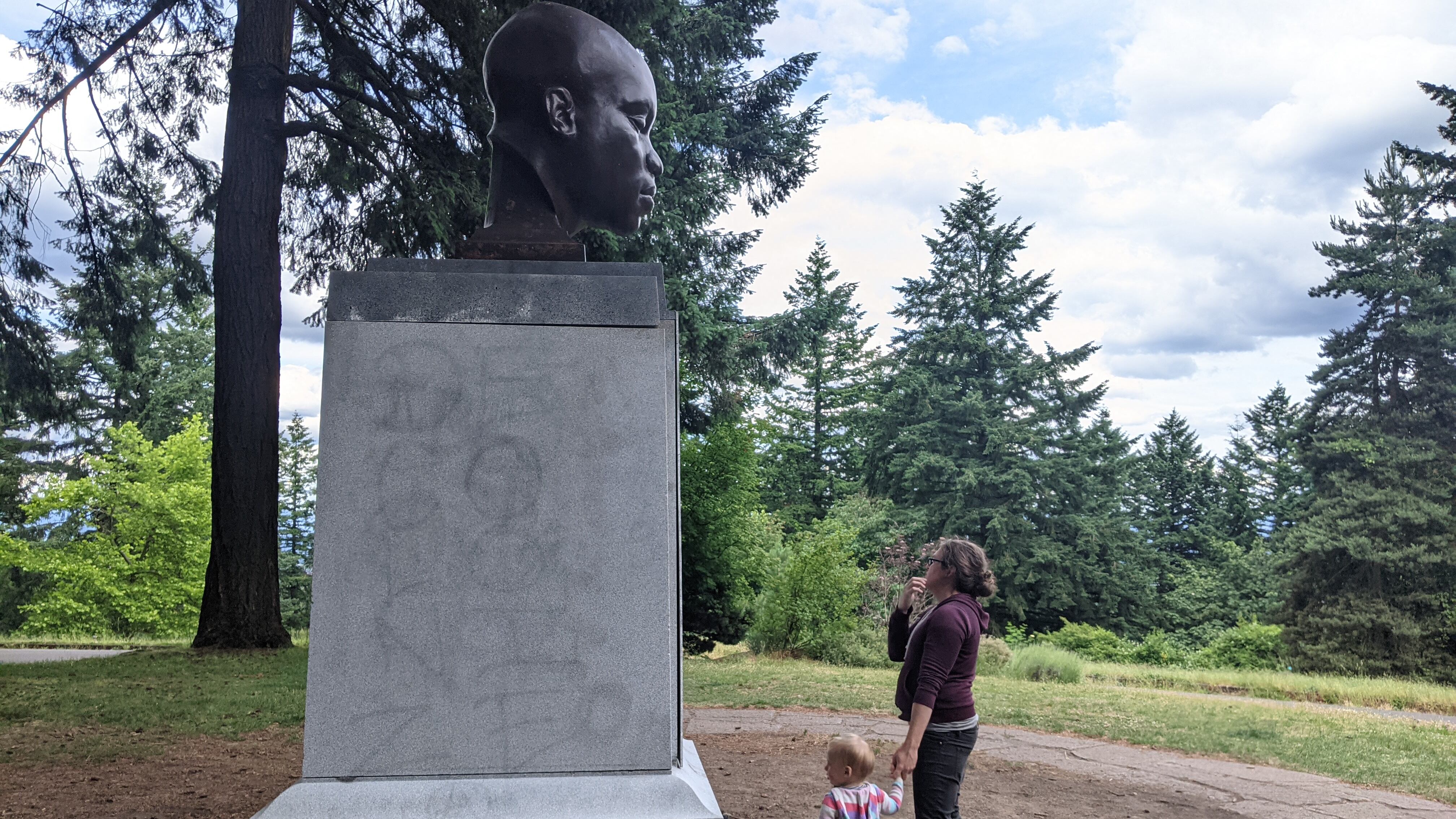The bust of York covertly erected on Mount Tabor will stay there for a while. And a depiction of him might stay on the volcano forever.
In February, an anonymous artist installed the 4-foot bust of York, an enslaved Black man who was a member of the Corps of Discovery, on the pedestal that once held a statue of former Oregonian editor Harvey Scott. The new artwork has drawn adoration—and repeated vandalism.
Last week, police cited a Portland woman, Jeanette Grode, for three misdemeanors after she allegedly covered the statue’s base in purple spray paint. (A woman who gave her name to bystanders as Grode was filmed ranting that it wasn’t right to replace a white man with a Black man.)
The incident renewed clamor around the bust, especially after several media outlets reported that York would not stay on Mount Tabor permanently.
This week, WW talked to Jeff Hawthorne, arts program manager for the city. He cleared up a few misconceptions about the bust and explained what its future looks like. Here are three key revelations.
The bust isn’t bronze.
Instead, it’s built from wood covered in urethane. That’s a resin, like fiberglass but not as sturdy. The artist then lacquered the bust in bronze paint, giving it the appearance of a forged bronze sculpture. “There was also some painting on the plywood that was affixed to the pedestal,” Hawthorne says, “that made that plywood appear as if marble.”
The city has set no date for the bust’s removal.
Urethane isn’t weatherproof. That’s why the current artwork can’t be included in the city’s permanent collection. But Hawthorne says the bust will stay at Mount Tabor Park until it deteriorates. Nobody knows how long that will be—”perhaps because there aren’t very many public artworks made of that material,” Hawthorne says. It might remain for several years.
City officials know who the artist is.
“Some folks at the Regional Arts & Culture Council had a good guess and were able to confirm the identity of the artist,” Hawthorne says. That sculptor wants to remain anonymous, and the city is honoring that. But officials have started discussing with the artist the possibility of replacing the urethane bust with a permanent bust of York—this time cast in bronze.
